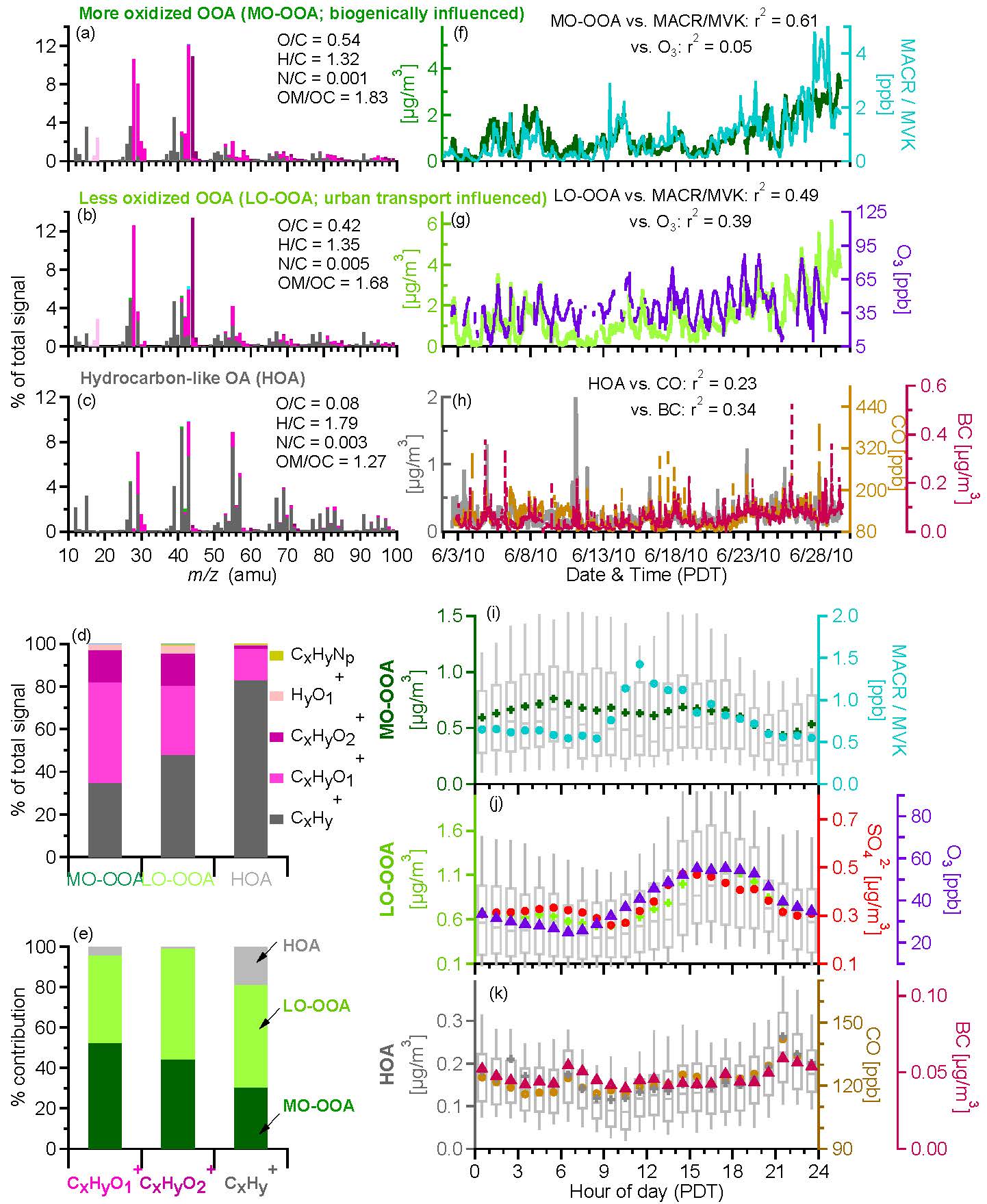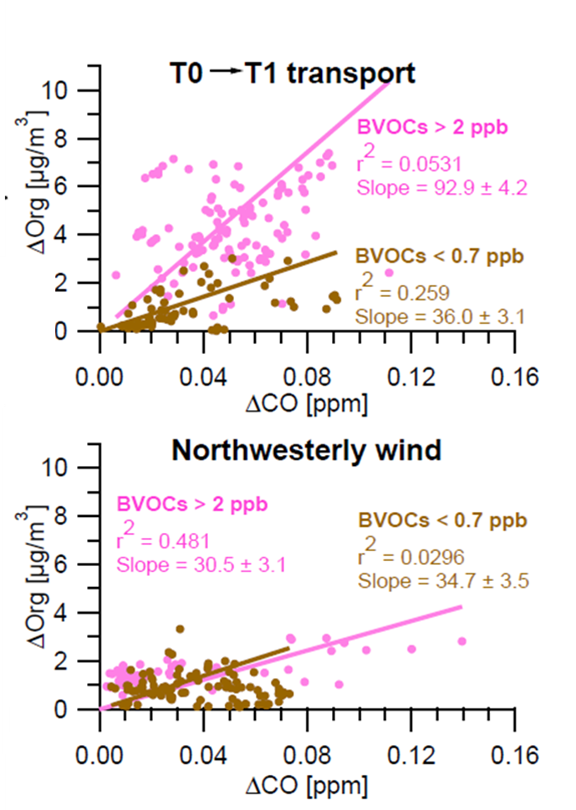Impact of Anthropogenic Emissions on Organic Aerosols During CARES
Submitter:
Zhang, Qi — University of California, Davis
Area of research:
Aerosol Processes
Journal Reference:
Science
An Aerodyne high-resolution time-of-flight aerosol mass spectrometer (HR-ToF-AMS) was deployed during the Carbonaceous Aerosols and Radiative Effects Study (CARES) that took place in northern California in June 2010. We presented results obtained at Cool, California, (denoted as the T1 site of the project) in the foothills of the Sierra Nevada Mountains, where intense biogenic emissions are periodically mixed with urban outflow transported by daytime southwesterly winds from the Sacramento metropolitan area.
Impact
During this study, the average mass loading of sub-micrometer particles (PM1) was 3.0 μg m−3, dominated by organics (80 %) and sulfate (9.9 %). Two distinct oxygenated organic aerosol components were identified via positive matrix factorization of the high-resolution mass spectra of organics. The more oxidized component was interpreted as a surrogate for secondary organic (SOA) influenced by biogenic emissions, whereas the less oxidized component was found to represent SOA formed in photo-chemically processed urban emissions. A hydrocarbon-like organic aerosol component was also identified, representing primary emissions mainly due to local traffic. On average, SOA accounted for 91% of the total organic aerosol mass and 72 % of the PM1 mass observed at Cool. Twenty-three periods of urban plumes from T0 (Sacramento) to T1 (Cool) were identified using the Weather Research and Forecasting model coupled with Chemistry (WRF-Chem). The average PM1 mass loading was considerably higher in urban plumes than in air masses dominated by biogenic SOA. The change in organic aerosol mass relative to carbon monoxide (DOA/DCO) varied in the range of 5-196 ug m−3 ppm−1, reflecting large variability in SOA production. The highest DOA/DCO was reached when air masses were dominated by anthropogenic emissions in the presence of a high concentration of biogenic volatile organic compounds (BVOC). This ratio was much higher than when urban plumes arrived in a low BVOC environment or during other periods dominated by biogenic SOA.
Summary
These results demonstrate that SOA formation is enhanced when anthropogenic emissions interact with biogenic precursors.



